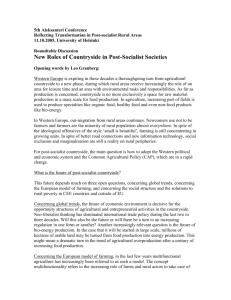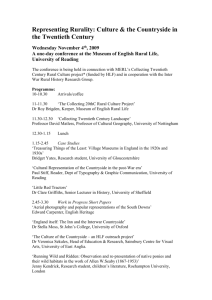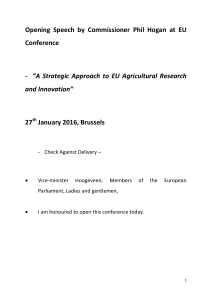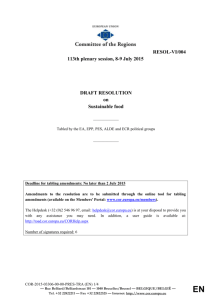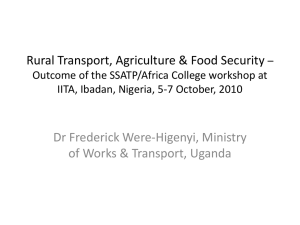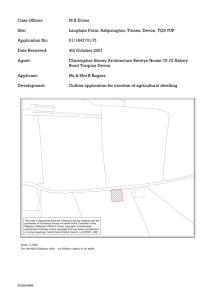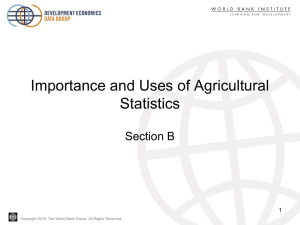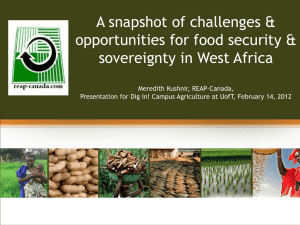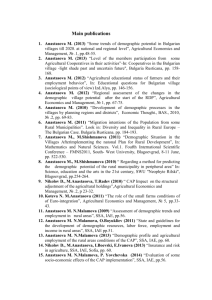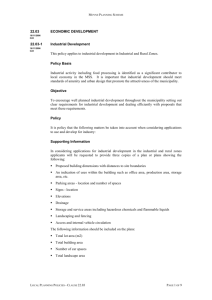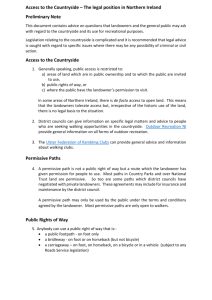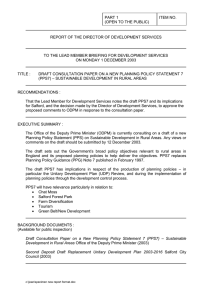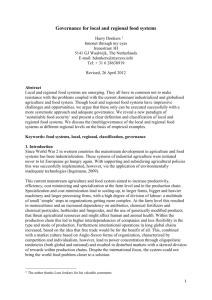Changing land management regimes and countryside`s functions
advertisement
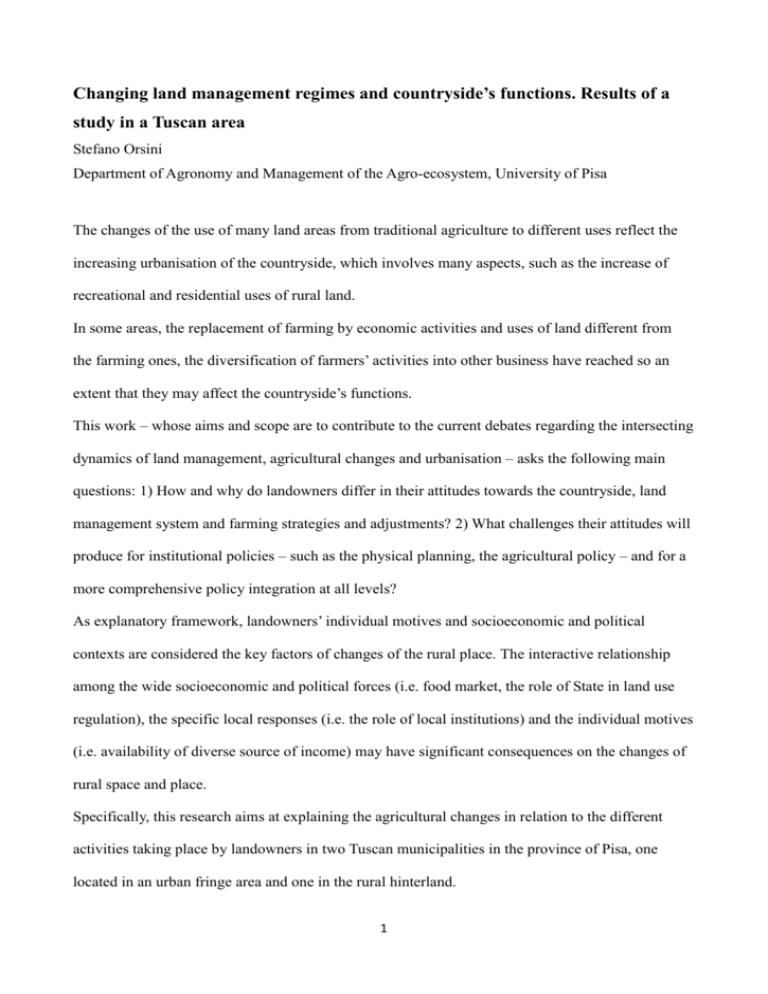
Changing land management regimes and countryside’s functions. Results of a study in a Tuscan area Stefano Orsini Department of Agronomy and Management of the Agro-ecosystem, University of Pisa The changes of the use of many land areas from traditional agriculture to different uses reflect the increasing urbanisation of the countryside, which involves many aspects, such as the increase of recreational and residential uses of rural land. In some areas, the replacement of farming by economic activities and uses of land different from the farming ones, the diversification of farmers’ activities into other business have reached so an extent that they may affect the countryside’s functions. This work – whose aims and scope are to contribute to the current debates regarding the intersecting dynamics of land management, agricultural changes and urbanisation – asks the following main questions: 1) How and why do landowners differ in their attitudes towards the countryside, land management system and farming strategies and adjustments? 2) What challenges their attitudes will produce for institutional policies – such as the physical planning, the agricultural policy – and for a more comprehensive policy integration at all levels? As explanatory framework, landowners’ individual motives and socioeconomic and political contexts are considered the key factors of changes of the rural place. The interactive relationship among the wide socioeconomic and political forces (i.e. food market, the role of State in land use regulation), the specific local responses (i.e. the role of local institutions) and the individual motives (i.e. availability of diverse source of income) may have significant consequences on the changes of rural space and place. Specifically, this research aims at explaining the agricultural changes in relation to the different activities taking place by landowners in two Tuscan municipalities in the province of Pisa, one located in an urban fringe area and one in the rural hinterland. 1 The information for this case study research have been gathered using different source of evidence, including in-depth interviews with landowners, several fieldtrips for direct observation, various public documents, maps and statistical data. Agriculturally, the two municipalities are mainly characterised by the production of cereals, sunflowers and other oleaginous crops, with few intensive winegrowing areas. Of particular relevance to the issue of the intersecting dynamics between change in agriculture and different forms of urbanisation, an increasing aptitude of the landowners and the farmers themselves for changing the original uses of rural land and buildings emerges: they use to diversify into home tourism in the rural area, into recreational or more purely residential business in the fringe area. Other results come out, such as the emergence of large tracts of countryside managed by a single operator because of several landowners considering the countryside mainly as a place to live in and agriculture as a low profitable activity. In terms of policy implications, these trends arise challenges for the government’s control over agricultural land use. The reduction of agricultural support, the liberalisation of agricultural policies, the presence of planning decision systems led by the only municipal level discretion, all these factors claim some sort of ‘landscape policies’, based on policy integration at local level and aimed at keeping the link between farming and land management. KEY WORDS: land management; urbanisation; agricultural changes; individual motives; contexts References Bryant C R, Russwurm L H & McLellan A G (1982) The city's countryside: land and its management in the rural-urban fringe. Longman. Lobley M & Potter C (2004) Agricultural change and restructuring: recent evidence from a survey of agricultural households in England. Journal of Rural Studies, 20 (2004) 499-510. 2 Munton, R (2009) Rural land ownership in the United Kingdom: changing patterns and future possibilities for land use. Land Use Policy, 26S (2009) S54-S61. Pinto Correia T & Breman B (2008) Understanding marginalization in the periphery of Europe: a multidimensional process. In Brouwer, F., van Rheenen, T., Dhillion, S. S. and Elgersma, A. M. (eds.) Sustainable land management: strategies to cope with the marginalization of agriculture. Edward Elgar Pub, pp.11-40. Pinto Correia T & Primdahl J (2009) When rural landscapes change functionality: examples from contrasting case studies in Portugal and Denmark. In Brouwer F, & van der Heide CM (eds) Multifunctional rural land management. Economics and Policies. London, Sterling, pp.256-276. Primdahl J, & Swaffield SR (2010) Globalisation and the sustainability of agricultural landscapes: Change patterns and policy trends in developed countries. Cambridge, UK: Cambridge University Press. 3


